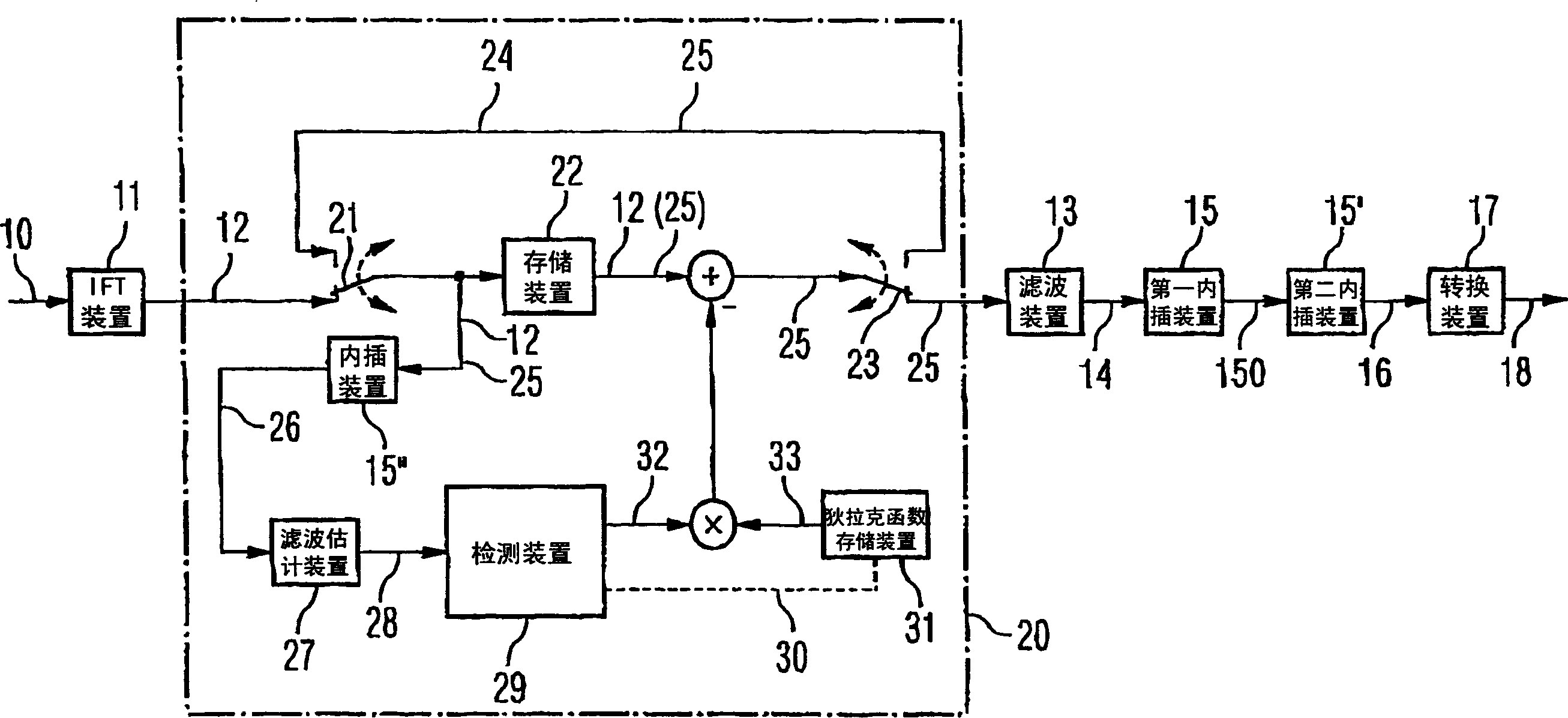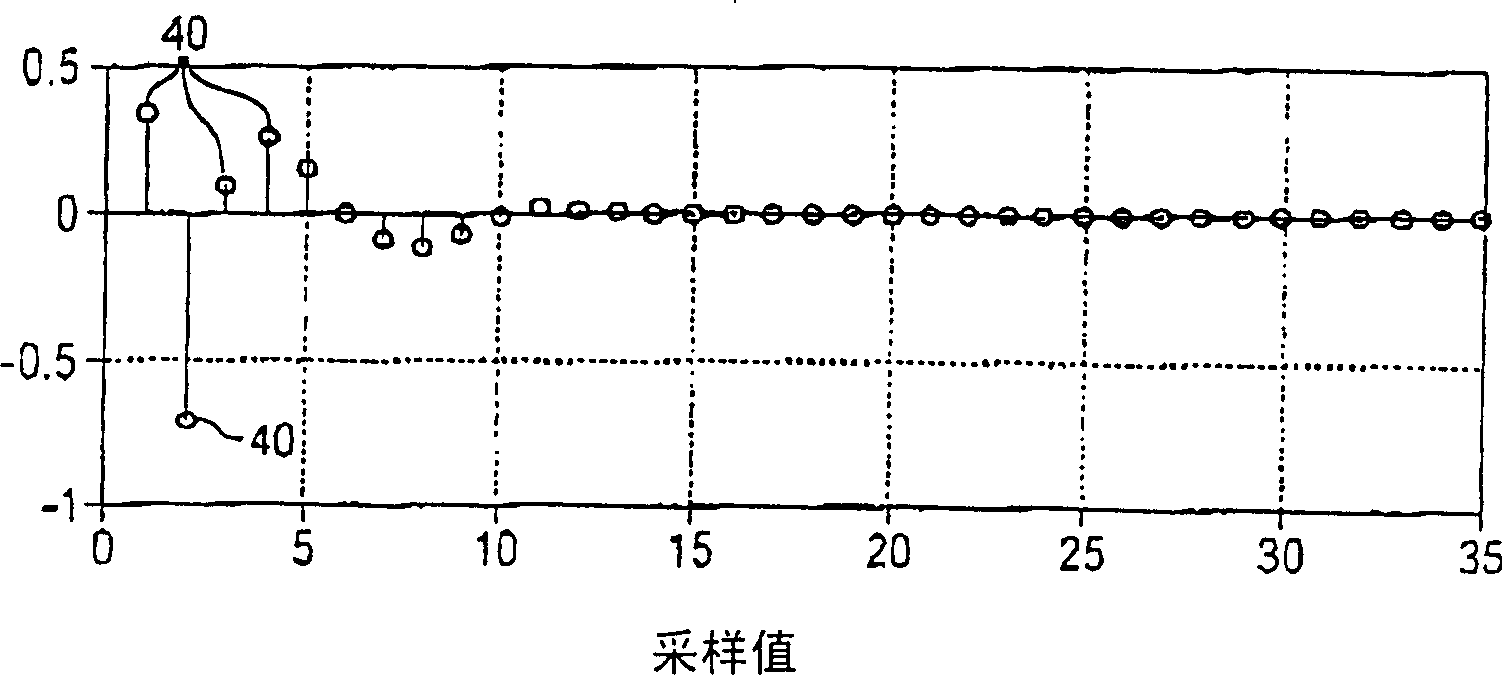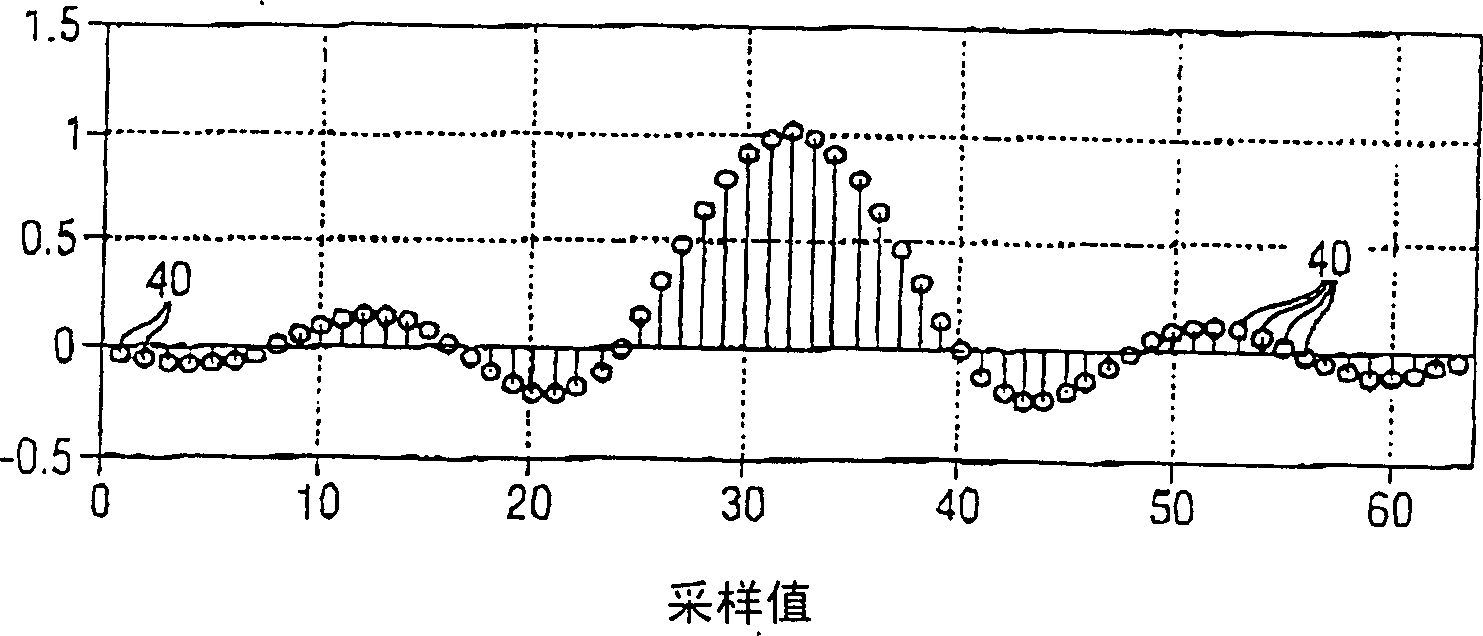Method for decreasing wave peak factor of multiple carrier signal
A multi-carrier signal and crest factor technology, applied in the modulation carrier system, multi-frequency code system, digital transmission system, etc., can solve the problems of limiting the practical application of the Henkel method and the time consumption of calculation operations
- Summary
- Abstract
- Description
- Claims
- Application Information
AI Technical Summary
Problems solved by technology
Method used
Image
Examples
Embodiment Construction
[0033] exist figure 1In the block diagram shown, a data stream 10 is provided to an IFT device 11 in which an inverse Fourier transform, eg, a fast inverse Fourier transform of a signal 10, is performed. The transformed output signal 12, a multicarrier signal such as a DMT or OFDM signal, has a crest factor, ie the ratio of the signal maximum value to the signal normal value, which is reduced in the PAR reduction means 20. The PAR reduction device 20 is followed by a filter device 13 which delivers a filtered output signal 14 . This filtered output signal 14 is then interpolated in a first interpolation means 15, such as an interpolation stage with a downstream low-pass filter, that is to say a predetermined number of zero values are inserted between adjacent sample values, whereby In the meantime, the image sidebands generated in the filtered signal 14 are suppressed in the integrating low-pass filter. Thus, an interpolated and filtered signal 150 is produced at the outp...
PUM
 Login to View More
Login to View More Abstract
Description
Claims
Application Information
 Login to View More
Login to View More - R&D
- Intellectual Property
- Life Sciences
- Materials
- Tech Scout
- Unparalleled Data Quality
- Higher Quality Content
- 60% Fewer Hallucinations
Browse by: Latest US Patents, China's latest patents, Technical Efficacy Thesaurus, Application Domain, Technology Topic, Popular Technical Reports.
© 2025 PatSnap. All rights reserved.Legal|Privacy policy|Modern Slavery Act Transparency Statement|Sitemap|About US| Contact US: help@patsnap.com



